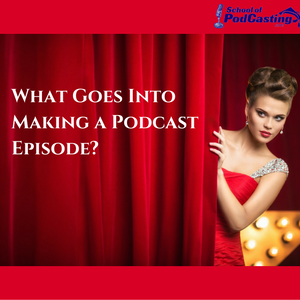
Today I want to share what I do to put together an episode. My example will be the latest episode of the Logical Weight Loss Podcast. I also do a podcast microphone shootout with microphones in the $300 range (last week, we did a shootout with microphones that were under $100)
This Week's Sponsor: Emerald City Productions
This week's show is sponsored by Emerald City Productions. Get your podcast edited and sounding great with this awesome special. Your first four episodes will be $15 each (after that they go to the regular price of $40). Check them out at www.emeraldcitypro.com/sop
Because of My Podcast I Got A New Job: Super Joe Pardo
Joe Pardo is the man behind the Dreamers Podcast, and also the organizer of Podcast MidAtlantic. Today Joe shares how his podcast got him invited to an event. At that event he got to meet some influencial people. Those people got to know Joe, and through his podcast they knew what his credentials were and offered him a job. Find Joe at SuperJoePardo.com
Being the Scenes Of Making a Podcast Episode
So I had someone who was surprised at the amount of work that might go into a podcast. So this week as I prepared to publish an episode of the Logical Weight Loss Podcast, I took notes. There is one key point here.
The length of time spent on an episode does NOT equal more downloads. You can spend all day working on content that doesn't connect with you audience. So here is what I did.
First based on the ideas in the book Secrets of Dynamic Communications: Prepare with Focus, Deliver with Clarity, Speak with Power. I came up with my main idea. Which is, “Based on mainstream media, it is easy to feel out of place if you are alone for the holidays. This along with the numerous activities of the holidays can lead to stress, and stress can lead to emotional eating.” That is where I started.
Here is a little confession. Last year I was “Alone” for the holidays. It turned out it wasn't that bad. Different? Sure. Bad? Nope. I wanted to help anyone who might be feeling down for the holidays. So I set out for strategies and insights for those who are alone on the holidays.
I started with Google. I looked through about 10 articles and ended up reading five.
I pulled from my own experiences.
I looked into resources for people who really were in a bad place and then made sure they were legit.
I then went down a rabbit hole, when I found iPrevail. A pretty cool website that offers live chat for those who need to talk, and for those who want to go deeper, the offer some online courses. Intrigued, I signed up and took one. Note: This wasn't needed to complete the episode, but I always go with the thought “If it interests me, it probably interests my audience.”
I then looked at the holidays and tried to find things that might be entertaining. I injected some humor to stop the episode from being so dark. I found examples I thought people could relate to (overly gushy Jewelry commercials), decorating a Christmas Tree, and weird family members. All of these to point out that the holidays are not a world of splendor filled with Rainbows and Lollipops.
I took some time to figure out what topics I wanted to hit first. In other words, I tried to take the smattering of ideas and organize them into a stream of ideas that flowed nicely.
I also threw in a quick segment on an egg cooker I recently purchased.
Finally, I recorded it. My show notes were pretty done as I now make my show notes first to organize my thoughts.
I recorded directly into my [easyazon_link identifier=”B00KCXMBES” locale=”US” tag=”sop2-20″]Zoom H5 Four-Track Portable Recorder[/easyazon_link] , and then took that recording and put it into Hindenburg Journalist, and added the intro and outro music along with some transition music. If you need music, check out podcastingresources.com. I uploaded the file to Libsyn.com and copied and pasted the file into my WordPress (as this is an old site, I'm still using the PowerPress plugin, if this was a new show I would use the Libsyn plugin). Use the coupon sopfree when signing up at Libsyn.com to get a free month (in addition to the current month) .
Podcast Microphone Shootout $300 Range
All prices are based on Amazon.
Audio Techncia BP40 (Full Loaded $547)
Microphone #1 Was [easyazon_link identifier=”B00VXSVF6G” locale=”US” tag=”sop2-20″]Audio Technica BP40 Large-Diaphragm Dynamic Broadcast Microphone[/easyazon_link] is $349. The [easyazon_link identifier=”B011VJOU8Q” locale=”US” tag=”sop2-20″]Audio-Technica AT8484 Shockmount for BP40[/easyazon_link] is an additional $99. I would recommend the Rode PSA1 Arm ($99)
Heil PR40 ( Fully Loaded $495)
Microphone #2 Was the [easyazon_link identifier=”B000SOYOTQ” locale=”US” tag=”sop2-20″]Heil PR-40 Dynamic Studio Recording Microphone[/easyazon_link]. There is a nice bundle with a boom arm and shock mount [easyazon_link identifier=”B00T6JBAUA” locale=”US” tag=”sop2-20″]Heil Sound PR 40 Dynamic Cardioid Studio Microphone Bundle with PRSM Shock Mount, PL2T Overhead Studio and Broadcast Boom Mount and Microphone Cable[/easyazon_link] for $479. You would still need a pop filter or Wind Screen
I had set the volume the same for all microphones and found them all were about the same. You might want to pick up a Fet head to boost the signal of the PR40
Electrovoice RE320 ( fully Loaded $507)
Microphone #3 is the [easyazon_link identifier=”B00KCN83VI” locale=”US” tag=”sop2-20″]EV RE320 Variable-D Dynamic Vocal and Instrument Microphone[/easyazon_link] which costs $294. The [easyazon_link identifier=”B003BQ2DKK” locale=”US” tag=”sop2-20″]Electro-Voice 309A Suspension Shockmount (for RE20 or RE27ND)[/easyazon_link] is $99. Here again you need a pop filter, or a Windscreen and a Rode PSA1 boom arm.
Why Did We Hear Microphone #3 Twice? (the RE320) because it has a bass roll off switch, and for me (my opinion) I thought that was the best of the tree. The first two (to my ear) sounded almost identical. I love the shock mount for the BP40 (it is specially made fpr the microphone and makes getting the mic in and out super easy.
According to my kitchen food scale, the RE320 was the heaviest at 1.7 lbs, the BP40 was 1.66 lbs, and the PR40 was only 13.7 oz.
Here again, there is no bad choice. I use the Eletrovoice RE320, and none of the other microphones moved me to lose this mic. In the end the difference between the three was minimal in my non “audio snob” ears.
How Podcasting Helped My First TV Appearance
I was interviewed on the Golden Opportunities show this week (it will air at 11:30 AM EST on Channel 3 in Cleveland on December 11). Here was the process:
The goal was to explain podcasting to people over 55.
I had a phone call with the showrunner and we talked for 10 minutes.
From that the showrunner picked the parts that she liked, and explained the answers that I provided that fit their audience.
I didn't have to memorize the answers (but I more or less did). The segment would be four questions.
I practiced the night before, and I practiced the morning before. On the way up to Cleveland, I kept botching at least one answer. I wasn't blowing it, but it wasn't smooth.
I came up with words that would trigger a response that would help me remember the answers. I had a feeling I might “mess up” a little bit.
In the end I did slightly have a flub, but because of podcasting I caught it, clarified and continue. I didn't freak out.
All those “Ask the Podcast Coach” live sessions on Saturday helped me keep my cool.
Podcast Glossary “F”
Feed
A feed is a file that contains all the details of a podcast. The feed is often generated by your media host, or plugin, and is read by apps that then use that details to show the details on a screen (computer, phone, or tablet).
Feedburner
Feed burner is tool from Google that can take an RSS feed and add additional items to the feed. You also get stats on how many people are subscribed. Feedburner is deemed by many experts to be out of date and a prime cause for many trouble tickets for podcasting hosting providers (it often stops updating your feed and has been shown to scramble the show description and the episode descriptions). While it was once recommended in 2006, most podcast consultants tell their customers to steer clear of this now outdated tool.
FetHead
Fethead is a microphone amplifier that delivers 22 DB of clean gain to your microphone. So if you are using a microphone that needs a “push” to be louder, then you might try plugging your microphone into the Fethead.
FTP
FTP stands for file transfer protocol. In a nutshell, there are two ways to upload files. Http stands for hypertext transfer protocol. Of those two ftp is faster. It requires a separate program to upload files.

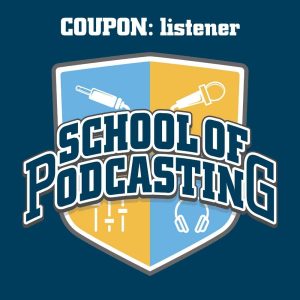
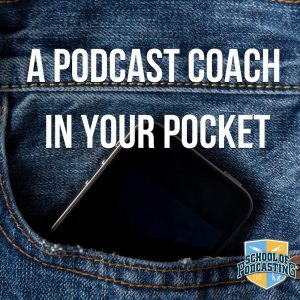
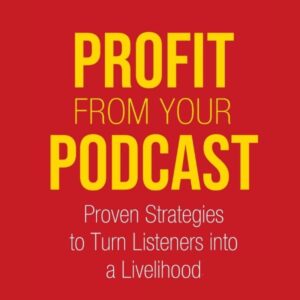
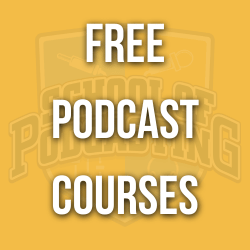
Thanks for the behind the scenes info. I was waiting for this post. The podcast glossary is very helpful also. Looking forward to more learning!
Hey Dave,
Great Content as usual. I love your tell it like it is attitude in a kind and fun way.
I wanted to comment on the mic shootout. I was listening in my car and I had to listen to it twice to make sure it wasn’t just me. You said with a pair of headphones you could barely tell the difference between the Audio Techncia BP40 and the Heil PR40.
I know this is subjective to the listener but the BP40 Sounded muddy and the Heil was very clear and crisp. Now the Electrovoice RE320 was very smooth and cool sounding. It was my favorite.
Anyways I wanted to make sure it wasn’t just me because I own a Heil PR40 which to be honest I do like the sound of the mic but your right EQing it on the mixer can change any mic sound. The reason I bought one was because I like how it looked on my live show with the shock mount.
Love the show. Keep up the awesome content and please never quit, you are more fun than any morning radio show.
Thanks Jeff,
I appreciate the update from the car. In the end, I think we all tweak until we like what he hear in our own headphones. It reminds me of playing guitar live, I wasn’t happy until I liked the sound of my amp and guitar. Thanks for listening.